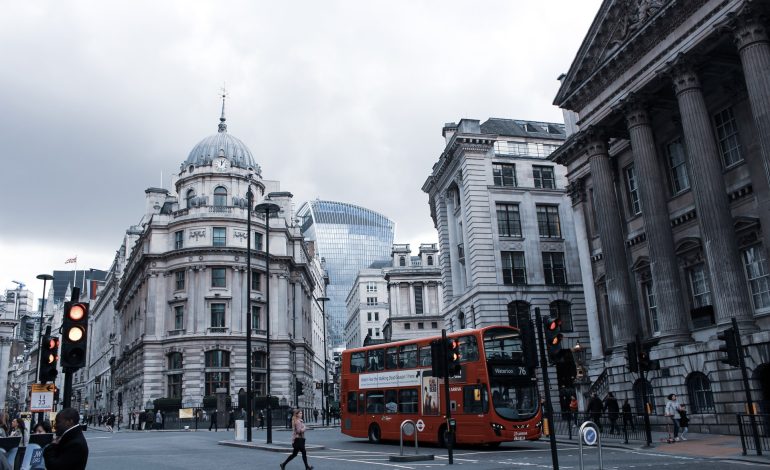South African capitalism is in total crisis. The ruling class is divided and the worsening conditions of the workers and poor are causing a groundswell of resentment that will burst to the surface sooner or later, placing renewed class struggle on the agenda.
Nearly two years after Cyril Ramaphosa replaced Jacob Zuma as president of South Africa all the euphoria of bourgeois public opinion has evaporated. At that time the big capitalists were ecstatic to have one of their own in the Union Buildings. Ramaphosa’s ‘new dawn’, consisting of ‘cleaning up’ government – i.e, taking state power away from the emerging black bourgeoisie around Zuma and putting it back under the direct control of big business – was greeted with great enthusiasm by the ruling class.
The rampant looting of state resources by the junior wing of the ruling class was destabilising the whole situation. The fear of losing control forced the big bourgeois to come out against Zuma. What the ruling class needed was a strong government to push through a programme of counter-reforms and put the whole burden of the crisis of the economy on the shoulders of workers.
But these expectations have fallen flat on their face. Instead, the situation has worsened in the two years under Ramaphosa. There is now a sense of doom hanging over Sandton, and the financial district in Johannesburg. The problem for the ruling class is that Ramaphosa’s hold on his position is very tenuous. The battles between the opposing bourgeois-supported factions in the ANC for power and influence have only intensified since the last party congress. The party is in a state of paralysis. This has weakened Ramaphosa to the extent that he is battling just to stay afloat. The upcoming National General Council of the ANC in June could indicate how strong his grip on power in the ANC is.
Now big business has decided to take matters into their own hands by launching a series of attacks on workers, with waves of mass retrenchments in the private sector. But by going on the offensive like this with a weakened government in office, the bourgeoisie is playing with fire. They are not moving from a position of strength but from one of desperation. In the end, all these attacks could spark a ferocious backlash from the workers.
Then there is the electricity supply crisis, which has deepened to such an extent that the mining industry had to close down operations earlier than usual for the Christmas break. Eskom, one of the world’s largest utility companies, which is responsible for generating 95 percent of the country’s electricity supply, is on its knees as a direct result of two decades of mismanagement, corruption and outright looting of its resources.
Economic stagnation
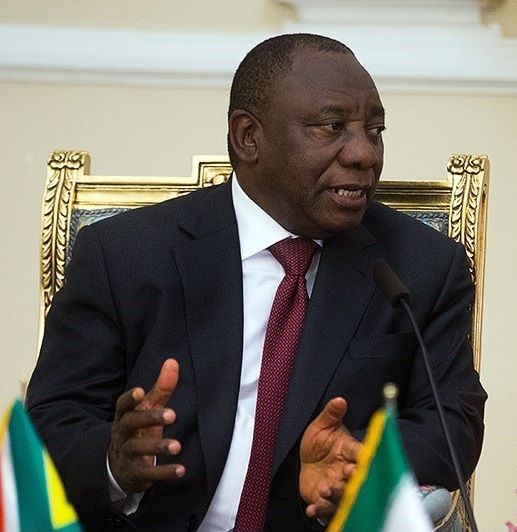 Ramaphosa is a disappointment to the ruling class / Image: Erfan Kouchari
Ramaphosa is a disappointment to the ruling class / Image: Erfan Kouchari
These attacks by the ruling class are a reflection of the seriousness of the crisis. Capitalism in South Africa is going through its deepest crisis ever. When we are talking about crisis, we don’t mean an episodic one, but an organic crisis of the system. This affects all facets of society – economic, social and political.
A socio-economic system is viable as long as it develops the productive forces, i.e, industry, agriculture, technique. Seen from this perspective, it is pretty obvious that things are in a very bad situation. The crisis in the economy is caused by capitalism itself, which has reached a blind alley. The capitalist policies pursued by the ANC government for the last 25 years, together with the world crisis of capitalism, have resulted in a stagnated economy. In fact, the economy still has not recovered from the 2008 crash. Now there is a new global slump on the horizon, which will hit the economy hard.
South Africa is Africa’s most-advanced economy. Unlike most countries on the continent, it has a relatively well-developed and diversified economy. In addition to its primary sector, with its mineral wealth and modern agricultural industry, it also has secondary industries like manufacturing (vehicles, machines) as well as a sophisticated financial industry.
However, the economy is going through a deep slump. The rand has collapsed from R6.50 to the dollar to over R16 to the dollar over the last 10 years. New investment in the economy has collapsed. Government debt levels have grown from 25 percent of GDP in 2009 to 60 percent now, and are expected to surpass 70 percent soon. This means that severe cuts will be made in the living standards of workers.
GDP growth for 2019 was revised down to 0.5 percent. This is the ninth straight year that growth forecasts were revised downwards. The growth in GDP for the last 10 years is the worst since the Second World War. The economy has gone into recession three times in the last decade. Now it is on the verge of another recession. Average GDP growth over this period is less than one percent on an annual basis. This is what bourgeois economists call secular stagnation. This is not a normal cyclical slump, after which the economy quickly recovers and starts to grow rapidly again. On the contrary, it is a long deep slump and indicates that the system has reached its limits. Of course, there is no such thing as a final crisis of capitalism. On a capitalist basis, the economy will eventually recover, but not before it has wreaked havoc on South African society and the working class.
Waves of retrenchments
The ANC government tried to get out of the crisis by expanding credit. Marx explained that credit can temporarily expand the market beyond its natural limits. But eventually, credit has to be paid back with interest. The capitalist policies of the government inflated demand by deregulating the financial markets, which encouraged unsecured lending. But since the crisis hit 10 years ago, this has led to a massive increase in debt. Consumer debt now stands at a staggering 19 trillion rand, with 72 percent of household income spent on servicing debt. More than 10 million people are in arrears on their debt.
It is clear from all of this that what we are witnessing is a deep crisis, which cannot be solved on a capitalist basis without launching a massive assault on the living standards of working-class people. This is precisely what we are seeing now. This is the only option for the ruling class. In order to pay for the crisis, the bourgeoisie is putting the burden on the shoulders of the working class.
This is the reason for the current waves of retrenchments, which have been announced across the major sectors of the economy over the last four months. Standard Bank is retrenching 1,200 workers. Group Five, the construction giant, is planning to retrench thousands. The telecommunications company, Telkom is cutting 3,000 jobs. ABSA Bank is cutting nearly 1,000 jobs. There are major job cuts in the manufacturing industry, with PPC Cement announcing major plans for retrenchments. Tongaat-Hulett is cutting 5,000 jobs. Massmart is cutting 30 percent of its retail workers. Sibanye-Stillwater is cutting 5,000 jobs in at the platinum mine in Marikana. Alexkor, the diamond company, is cutting jobs. And media companies like Multichoice are cutting 2,000 jobs. There are many, many others. Hundreds of thousands of jobs have been lost over the last few years and many others have had their conditions of employment worsened.
Social crisis
The crisis in the economy is having a devastating impact on living standards. Working-class people are now worse off than they were 10 years ago. Per-capita income in 2018 was the same as in 2014. Real unemployment stands at 10.2 million people. Youth unemployment is the highest in the world. The official unemployment rate has not been below 20 percent for the last 20 years. A whole generation has now grown up with this reality.
No country in the world can sustain such a large number of unemployed people relative to its population without going through a severe social crisis. It is putting enormous strain on workers. Job losses do not only affect workers but have a direct impact on entire towns and regions. For instance, the closure of the steel plant in Saldanha Bay in the Western Cape does not only affect the town, but the whole West Coast region. In addition, it also affects the area around the Sischen mine, 800 kilometres away.
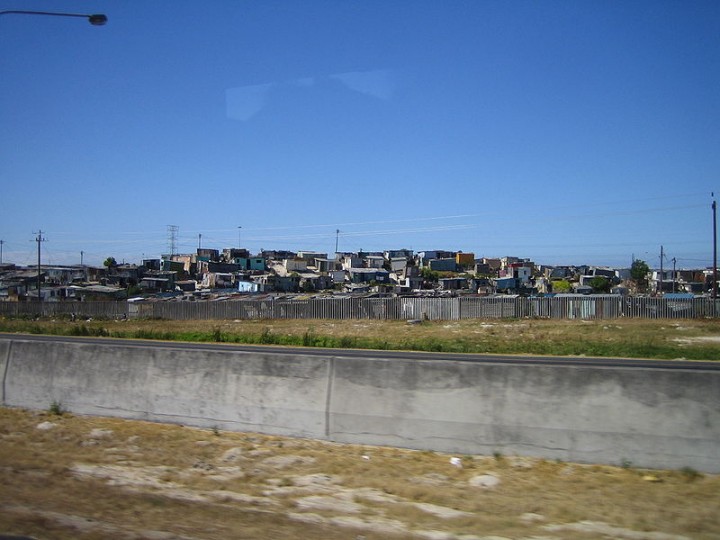 The crisis in the economy is having a devastating impact on living standards. Huge sections of the population live in shanty towns / Image: Thoms Sly
The crisis in the economy is having a devastating impact on living standards. Huge sections of the population live in shanty towns / Image: Thoms Sly
This is having major social consequences. The social impact of the crisis cuts deep. It is enough to mention the scourge of violence against women to understand how deep the crisis goes. Violence against women is a true social sickness. According to statistics, the number of women killed by their partners or spouses is five-times higher than the world average. If the health of any society is measured by how it treats women, children and old people, then South African society is in an extraordinarily bad situation. Again, the root cause of this social crisis is the capitalist system. It is not enough to recount a list of all the social horrors facing society, but to explain the processes which give rise to them.
Capitalism arrived very late to South Africa — after the major imperialist powers had already divided the world amongst them. The introduction of capitalism, and the violent upheaval after the discovery of some of the world’s biggest mineral reserves, has left a festering wound on society. Processes that developed over hundreds of years in Europe were condensed over a very short period of time. With its brutal introduction, the need to sustain capitalist relations tore the social fabric of the native societies to pieces. Centuries-old social traditions and norms were brutally uprooted almost overnight. In order to create free proletarians to work in the mines, millions of peasants were uprooted and flung into the cauldron of capitalist production.
The clearest example of the social impact this has had on society is the migrant labour system. Dispossessed and poverty-stricken peasants from the Eastern Cape are taken to the mines in the Platinum Belt and the Great Gold Reef on the other side of the country. For instance, some of the world’s best rock drillers come from Pondoland in the Eastern Cape and are taken to the North-West Province to work the platinum mines. In the meantime, the areas from which these rock drillers are sourced are deliberately kept underdeveloped to keep down labour costs. This migrant system has, over decades, created the phenomenon whereby workers have two families – one where they work and live, and another where they originate from in the Eastern Cape. So it is clear that, when workers are retrenched, the effect is not only felt in the mining communities, but it has devastating consequences thousands of kilometres away.
This has clear social consequences. The nuclear family in South Africa only really exists among the white population, where 76 percent of children have both parents involved in their upbringing. The family structure for black and coloured people looks very different. More than 55 percent of black children are raised by extended family – typically grandmothers, aunts, but also by cousins. More than 50 percent of these children rely on social grants to survive. The reason for this is the capitalist system, which has torn apart the social fabric of society, uprooted millions of people and disrupted social life. But the same process is also responsible for the explosiveness and volatility in society, and is ultimately responsible for the temperamental nature of the working class.
Eye-watering inequality
A key aspect of the situation is enormous inequality, both in terms of income and wealth. In South Africa, the living conditions of the rich are comparable to those of the developed world, while the living conditions for the poor is comparable to those in the poorest countries. According to the latest inequality trends reports, inequality has worsened.
If we look at income, we can see that the top one percent gets 20 percent of all income, while the top 10 percent takes 65 percent of all income. The real wages of the bottom 10 percent have shrunk by 25 percent between 2011 and 2015. By contrast, the income of the top two percent grew by 15 percent over the same period, while the top one percent got an increase of over 48 percent.
These figures thoroughly demolish the nonsense of “trickle-down” economics. Income is moving upwards from the poor to the rich, as Marx explained. The executives, of course, do not only get income from salaries but also from things such as shares. Between 2003 and 2016, while the economy grew by four percent, capital gains from shares grew by 20 percent. Moreover, wealth inequality in South Africa is staggering. The wealthiest one percent own 67 percent of all wealth, the top 10 percent own 93 percent, while the remaining 90 percent own a meagre 7 percent.
Apartheid, racism and capitalism
Another scourge haunting South African society is racism. Malcolm X once said that it’s not possible to have capitalism without racism. That is an accurate description of South African society. Racism runs through the veins of the development of capitalism in this country. Due to the late development of capitalism, and in order to exploit the mineral wealth and develop industry, first Cecil John Rhodes and British colonialism; and later the apartheid regime under Afrikaner nationalism, drove down the cost of labour to the lowest possible level, using the vilest and crudest forms of racism. The defeated African tribes were dispossessed of their land and the mass of black people were driven into a state of servitude. The poison of racism was institutionalised and, to one degree or another, exists to this day in ‘post’-apartheid South Africa.
Although the apartheid regime was formally overthrown, the living conditions of the masses of black people have hardly improved. The reason is the negotiated settlement that was reached between the liberation movement and the apartheid regime in 1993, which resulted in state power placed in the hands of the new black elite, while the economy would remain in the traditional white ruling class. Of course since then, parts of the black elite have joined the traditional capitalist class. This has resulted in two opposing factions, which are fighting for control over South African capitalism. It is this struggle that is at the heart of the crisis in the ruling class.
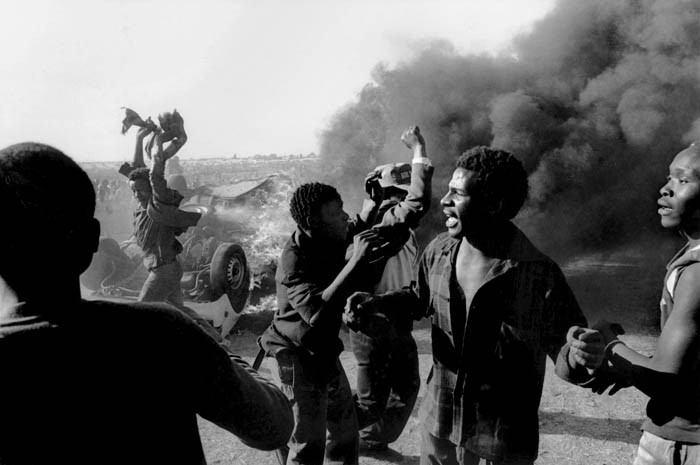 Although the apartheid regime was formally overthrown, the living conditions of the masses of black people have hardly improved / Image: Paul Weinberg
Although the apartheid regime was formally overthrown, the living conditions of the masses of black people have hardly improved / Image: Paul Weinberg
Nevertheless, none of this has improved the lot of the South African masses, who still face brutal exploitation and discrimination. Eight out of every 10 workers are black, while, on the other hand, 67 percent of senior managers in the private sector are white.
The monthly per-capita income for whites is currently around 24,000 rand, while blacks get a third of that on a per-capita basis, at around 6,000 rand. The CEOs of the biggest companies on the Johannesburg Stock Exchange, which is 97 percent white owned, earn more than 1,750-times more than ordinary workers. Unemployment among white people is less than six percent, while it is more than 30 percent among coloured people; and nearly 40 percent among black africans. More than 70 percent of the land is in white hands, while black Africans own four percent of the land. Rich private schools provide education on par with the advanced capitalist countries, while education for the black majority is underfunded and under-resourced. While some effort has been made in the delivery of houses since 1994, the growth of shanty towns is outstripping the growth of formal housing. Where formal housing is constructed, it has been located in the same derelict areas, with poor infrastructure, where blacks have been assigned to live under apartheid. These areas are, for the most part, far away (up to 50 kilometres) from where people work and are connected with poor public transport. The result is that cities like Cape Town, Pretoria and Durban have “European” sections, where people have western living standards, while the majority of blacks still live in overcrowded townships and shanty towns on the outskirts. Through economic deprivation of the working-class black majority, the apartheid system actually still exists to this day, although in a “democratic” form.
The emerging black bourgeoisie, with their demagogic rhetoric of ‘radical economic transformation’, always try to erect a Great Wall of China between the fall of apartheid and the period afterwards. According to them, the form of the oppression before 1994, i.e, the apartheid regime, is the root cause of the crisis. However, we should explain that the root cause is capitalism itself. The capitalist system can exist under all kinds of regimes – bourgeois democracies, military dictatorships, bonapartist regimes of different types, facism, constitutional monarchies, etc. What is decisive is not the political superstructure, but the economic base, the mode of production and the class ownership of the means of production. From this perspective, nothing fundamental has changed. South Africa remains a capitalist economy before and after 1994.
Naturally, the upstart bourgeoisie cannot admit that capitalism itself is the problem. Their aim of establishing a ‘de-racialised’ capitalism, through schemes such as Black Economic Empowerment, is to join the club of the traditional white bourgeoisie in exploiting the South African masses. For the workers, there is nothing to be gained from this. If it is true that this form of oppression is the cause of the crisis, then since the apartheid regime was overthrown 25 years ago, logically, you would expected things to have improved, or at the very least, remained the same. But the government statistics show another story: things have progressively worsened. Unemployment and inequality are now at levels greater than the period before 1994. The root cause is the capitalist system, which concentrates wealth in fewer and fewer hands. The mass of black workers need to rely on their own strength to free themselves from capitalist exploitation and refuse to be used to fight proxy battles for rival capitalist interests. Regardless of whether power is in the hands of the white bourgeoisie, or if it is taken over by a layer of black capitalists such as Cyril Ramaphosa, nothing will fundamentally change for the workers and the poor.
The political crisis
The process of industrialisation of the country after the Second World War created an industrial working class in addition to the mining industry. The working class consists of different layers. Some layers are more advanced than others, some are more backward. In a revolutionary situation, the more-backward layers can suddenly become the most advanced layers, and vice versa. There is a certain layer of advanced workers, which have traditionally led all the major battles in South Africa for the past 50 years. These are typically industrial workers. Whenever these layers move, they have always been able to mobilise the rest of the working class. The battles of the 1980s and 1990s were led by this layer, and since 1994 most of the important battles were led by them.
Between 2004 and 2013, there was a massive upsurge in the class struggle as the working class fought back against the attacks of the ruling class. They were fighting against cuts in utilities like water and electricity, against privatisation, wage moderation, etc. The advanced workers could see that all the promises of the “democratic transition” of a better life were going out of the window. Workers moved to the political field and the industrial field and back again.
This upsurge in the class struggle had major political consequences. The crisis and fragmentation of the ANC along class lines is as a result of this. A huge chunk of the advanced workers have moved out of the ANC. The party is losing urban support and becoming more and more a party with its base in the rural provinces. Two-thirds of people are living in cities and this is expected to rise to 70 percent by 2035. It is therefore clear that the ANC has a major crisis on its hands. The May 2019 election results show that a majority of South Africans did not participate in the election. The ANC, despite being by far the biggest party, governs the country with the active support of just 28 percent of the electorate.
The recent implosion of the Democratic Alliance is also a result of the general political crisis. Over the past 10 years, there was an almost perfect crisis in the ANC, but despite this, the DA is moving backwards and could even split and fragment long before the crisis in the ANC reaches it zenith. This shows the weakness of the bourgeoisie. The crisis of the system is also a crisis of the capitalist class, which is left with no stable party to manage its rule.
The EFF is the fastest-growing party. But again, despite the overall crisis, it is not growing and developing as fast as it could have. In a situation such as South Africa over the past few years, a small party could have grown very fast into a big party provided it had the correct approach and connected with the advanced guard of the workers. However, it still has not been able to penetrate the decisive layers of the working class. This is to do with it’s demagogic tone, which alienates the working class. Meanwhile, the party has been moving to the left and increasingly diluting its programme. When the EFF broke out of the ANC, this was a shift to the left, however since then the party leadership has been swinging to the right. The party is becoming more and more just another party in parliament, resorting to parliamentary intrigue and manoeuvres. At a local level, the party has been making deals with reactionary parties such as the DA, only to opportunistically switch to the ANC when things change. At the same time, the party has been increasingly leaning on black nationalism, arguing for a capitalism run by black South Africans. But this offers no solution to any of the problems of the South African masses.
Pressure cooker
Over the last period, there has been a receding of the movement of the working class. To put it more correctly, the advanced guard of the working class has pulled back from the stormy period of intense struggle. A certain level of tiredness has set in. At the same time, the workers are desperately holding on in an economy which is wreaking havoc on living standards. They are receiving the blows with the hope that the storm will subside soon. In the absence of a real revolutionary leadership, this is only natural. The ANC and SACP, which are the traditional organisations of the working class historically, were in government carrying out the attacks of the bosses. Other organisations such as NUMSA failed to provide a revolutionary alternative, despite being in a prime position to do so. The same goes for the EFF.
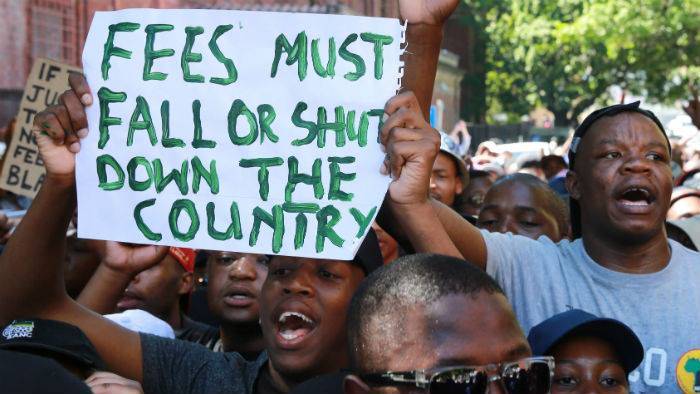 The limitations of a purely student struggle could be seen in the (nevertheless impressive) Fees Must Fall movement / Image: StudentSpaza
The limitations of a purely student struggle could be seen in the (nevertheless impressive) Fees Must Fall movement / Image: StudentSpaza
With the receding of the floodtide of class struggle from 2013 onwards, we have seen other layers go onto battle. There was the marvellous Fees Must Fall movement of the students, which revealed the revolutionary mood amongst the youth. It won some important concessions, however these have since been undermined and the burden to pay for them placed on the shoulders of other layers of the working class. The main problem was that the movement did not connect with the general working-class movement – although the student movement did make some contact with workers from the struggle against outsourcing. Thus, the struggle remained a purely student movement, isolating itself from the general struggle against South African capitalism.
Students are an important auxiliary force to the workers. But students are not workers. The limitations of a purely student struggle could be seen at the height of the Fees Must Fall movement, where, despite all the talk of “total shutdowns”, nothing really was shut down other than the university campuses. The economy still functioned normally. The banks operated, the mines worked unhindered, the factories ran and the supermarkets were open. Only the working class could have shut down the economy and threatened the bosses where it really hurts – their profits.
In the absence of a major push over the last the years from the advanced workers, other elements have come to the fore, like the upsurge in community protests of the urban poor and other more-backward elements like taxi drivers. The crisis has also driven the middle class into a frenzy. Unlike most African countries, South Africa does not have a large small business sector and small traders. The crisis has decimated these elements. This is the basis for the upsurge in xenophobic attacks against other African traders. These small traders are driven to insanity by a crisis they do not understand and see small traders of other countries as the problem. In these conditions, and with the high rate of unemployment, they have been joined by lumpen and other reactionary elements. On previous occasions, the advanced workers have always been able to stop these attacks. But with the ebb in the movement, the problem has been more pronounced. Meanwhile, parts of the ruling class have begun to lean on these layers by whipping up nationalist and tribal hysteria to cut across the class struggle.
Molecular process of socialist revolution
Does this mean that the working class is defeated, as some on the left imply? Not at all! The South African working class has not suffered a serious defeat since the 1960s. In their upcoming struggles, they will not only have to deal with the effects of the biggest crisis of capitalism in history, but also with the ineptitude of its leaders and the inability of its organisations to provide a revolutionary way out. The advanced workers are evaluating the situation and drawing the lessons of the previous period. When the working class moves again, it will be with a far-greater intensity and at a higher level than what we have seen in any previous period.
There is a physical limit that the workers can endure. The pressures building up in South African society is enormous. It must find an expression in one way or another. Sooner or later, that limit will be reached and the workers will move again. When they do, all organisations, groups, tendencies and leaders will be put to the test. Already, in 2018, there were more than one million working days lost to industrial actions. This figure has increased by 20.7 percent compared to the more than 960,000 working days in 2017.
Once the working class starts to move decisively, the ANC could be blown to pieces. Having governed on a capitalist basis, it has lost its moral and political authority. It will find it nearly impossible to hold back the masses. The organisations of the workers, especially the unions, could be transformed from top to bottom, with powerful left-wing tendencies emerging to challenge the inertia of the current leaders.
The working class will move again – as night follows day. But the movement of the working class is not a tap that can be opened and closed at will. All attempts to “kickstart” the movement are futile and counterproductive. They will move when they are ready to move – not one moment before. The task of revolutionaries is to connect with the advanced layers of the workers and enter into a dialogue with them. Our task should be to patiently explain the real situation. Workers don’t like things to be sugar-coated. We must tell them the truth. There is no way out on a capitalist basis.
We live in a revolutionary epoch. We have seen revolutionary movements in one country after another in Chile, Ecuador, Haiti, Lebanon, Colombia, Catalonia, France, Egypt, Iraq, Sudan, Algeria and Burkina Faso. South Africa is part of the world economy. It is part of the crisis of capitalism. The same processes, which take place around the world, take place in South Africa. Sooner or later, the scenes we are seeing in other countries will play out in the streets of Pretoria, Johannesburg, Durban, Mangaung, and Cape Town. The problem is not South African society, not a crisis of the working class, but a crisis of its leadership. The task facing revolutionaries is precisely to build the cadres for the revolution, with a clear Marxist understanding to connect with the struggles of the working class and lead them to victory, which can only mean through socialist revolution.

